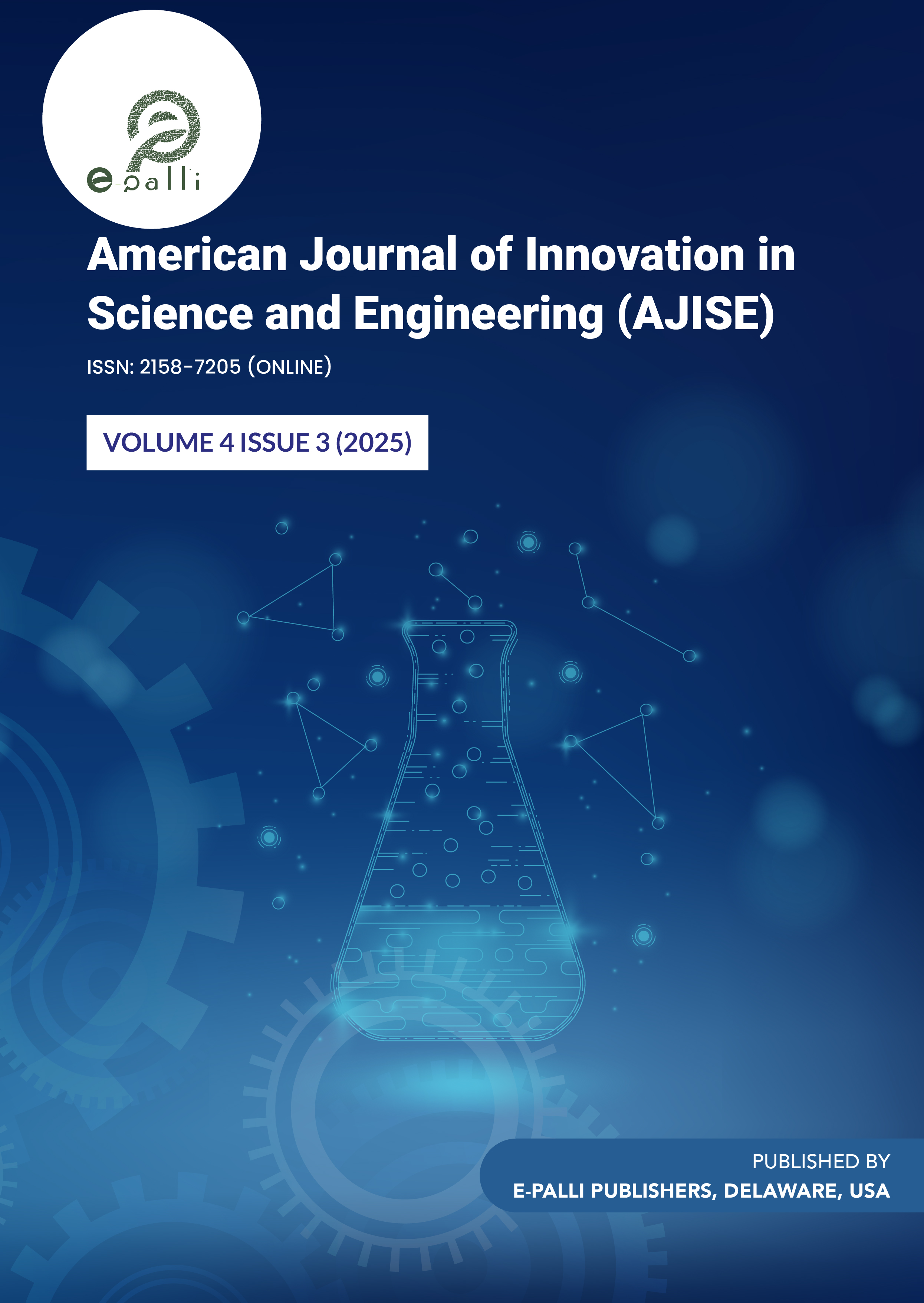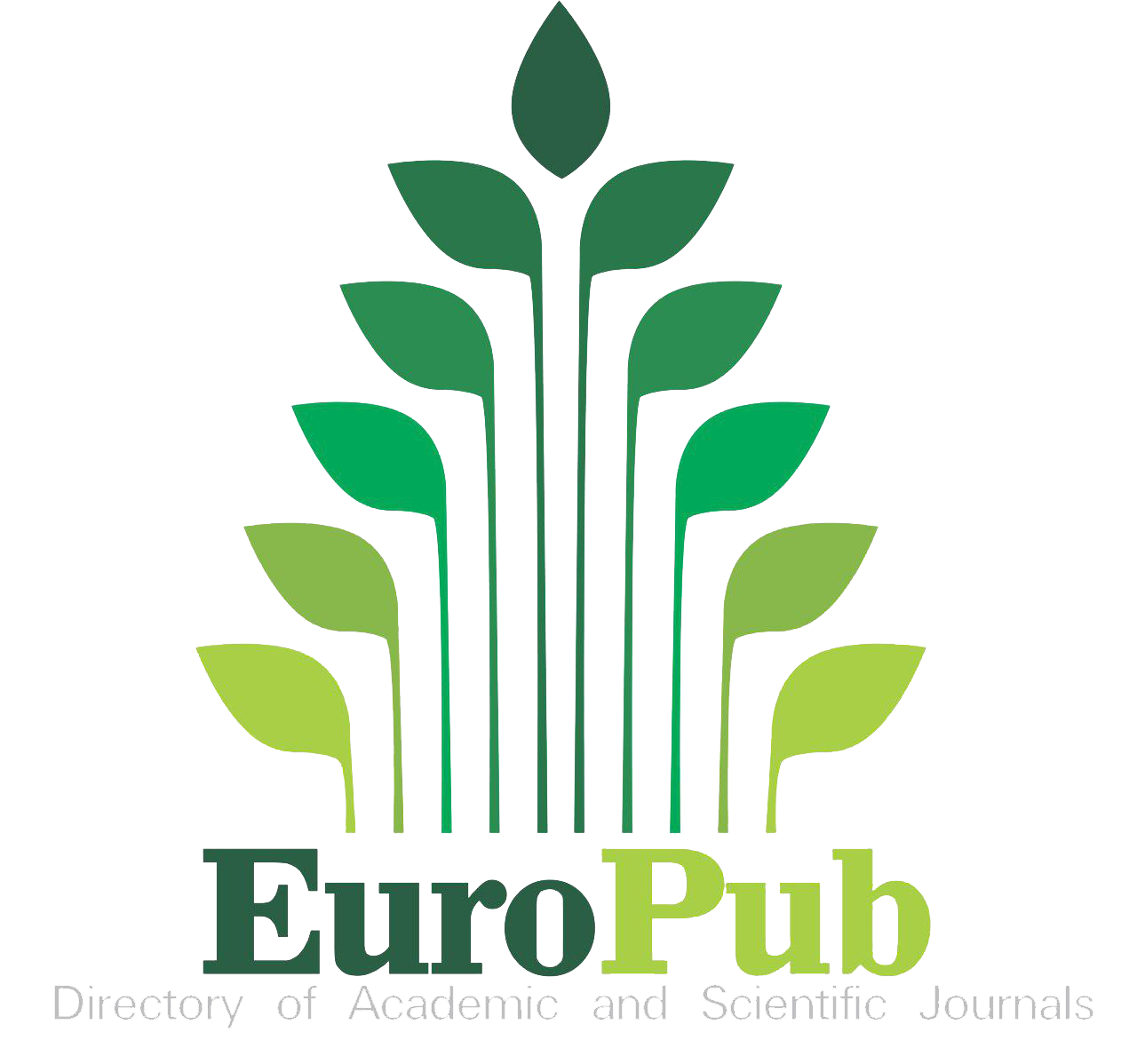Blockchain-Enabled Nanocatalyst Monitoring System for Real-Time Dye Degradation in Industrial Wastewater
DOI:
https://doi.org/10.54536/ajise.v4i3.5836Keywords:
Blockchain, Environmental Monitoring, Dye Degradation, Nanocatalyst, Wastewater TreatmentAbstract
The environmental and regulatory problems caused by industrial wastewater containing synthetic dyes such as methylene blue become more complex because these substances remain toxic and persistent while showing resistance to standard biological treatment methods. The research describes the creation of a blockchain-enabled nanocatalyst tracking system that detects and verifies dye pollutants in water streams through real-time monitoring. The system uses semiconductor nanocatalysts with advanced oxidation processes to break down, and uses microcontrollers to process data signals before blockchain protocols store performance metrics, which maintain transparency and immutability, and meet worldwide environmental reporting requirements. The system included a miniaturized reactor chamber with automated fluid management pollutants efficiently while optical and electrochemical sensors track concentration changes and monitor pH and temperature levels. The system and wireless blockchain connectivity in its compact design. The system achieved 85% methylene blue degradation in controlled tests while sensor data showed pseudo-first-order kinetics and maintained high calibration stability. The system performed well in power efficiency tests while showing fast blockchain transaction speeds and it maintained stability through different operational settings. The cost evaluation showed that the system operates within budget while environmental studies demonstrated better carbon emission performance than traditional monitoring systems. The proposed framework combines nanocatalytic water treatment with blockchain-based data tracking to create a sustainable wastewater management system which works for municipal treatment facilities and industrial sites and decentralized monitoring systems. The integration of environmental nanotechnology with digital compliance systems through this innovation enables the development of self-regulating water treatment systems for the next generation.
Downloads
References
Ali, H. (2010). Biodegradation of synthetic dyes—A review. Water, Air, & Soil Pollution, 213(1), 251–273. https://doi.org/10.1007/s11270-010-0382-4
Bielska, M., & Szymanowski, J. (2006). Removal of methylene blue from waste water using micellar enhanced ultrafiltration. Water Research, 40(5), 1027–1033. https://doi.org/10.1016/j.watres.2006.01.007
Clohessy, T., Acton, T., & Rogers, N. (2020). Blockchain adoption in environmental sustainability: Towards a research framework. Journal of Cleaner Production, 269, 122017. https://doi.org/10.1016/j.jclepro.2020.122017
Crini, G. (2006). Non-conventional low-cost adsorbents for dye removal: A review. Bioresource Technology, 97(9), 1061–1085. https://doi.org/10.1016/j.biortech.2005.05.001
Forgacs, E., Cserháti, T., & Oros, G. (2004). Removal of synthetic dyes from wastewaters: A review. Environment International, 30(7), 953–971. https://doi.org/10.1016/j.envint.2004.02.001
Hassan, M. A., & Shakaff, A. Y. M. (2016). Optical chemical sensors for environmental monitoring: Dye detection in wastewater using spectrophotometric techniques. Sensors, 16(9), 1469. https://doi.org/10.3390/s16091469
Kant, R. (2012). Textile dyeing industry: An environmental hazard. Natural Science, 4(1), 22–26. https://doi.org/10.4236/ns.2012.41004
Katheresan, V., Kansedo, J., & Lau, S. Y. (2018). Efficiency of various recent wastewater dye removal methods: A review. Journal of Environmental Chemical Engineering, 6(4), 4676–4697. https://doi.org/10.1016/j.jece.2018.06.060
Khan, M. M., Adil, S. F., Khan, M., Al-Mayouf, A. M., & Harraz, F. A. (2021). Recent advances in TiO₂-based photocatalysts for the degradation of organic pollutants in water. Journal of Environmental Management, 289, 112447. https://doi.org/10.1016/j.jenvman.2021.112447
Kouhizadeh, M., Sarkis, J., & Boukherroub, T. (2021). Blockchain technology and the sustainable supply chain: Theoretically exploring adoption barriers. International Journal of Production Economics, 231, 107831. https://doi.org/10.1016/j.ijpe.2020.107831
Li, X., Li, Y., Zhang, W., & Chen, G. (2020). Advances in nanomaterials for wastewater dye degradation: From design to integration. Journal of Environmental Sciences, 92, 114–132. https://doi.org/10.1016/j.jes.2020.02.010
Mahmoud, M. E., Nabil, G. M., & El-Mallah, M. I. (2021). Nanocatalysis in advanced oxidation processes for environmental remediation: Design and mechanistic insight. Environmental Nanotechnology, Monitoring & Management, 15, 100426. https://doi.org/10.1016/j.enmm.2020.100426
Oturan, M. A., & Aaron, J. J. (2014). Advanced oxidation processes in water/wastewater treatment: Principles and applications. A review. Critical Reviews in Environmental Science and Technology, 44(23), 2577–2641. https://doi.org/10.1080/10643389.2013.829765
Rajamanickam, D., & Shanthi, M. (2016). Photocatalytic degradation of an organic dye using TiO₂ nanoparticles under solar light. Environmental Nanotechnology, Monitoring & Management, 6, 133–137. https://doi.org/10.1016/j.enmm.2016.09.002
Rauf, M. A., & Ashraf, S. S. (2009). Fundamental principles and application of heterogeneous photocatalytic degradation of dyes in solution. Chemical Engineering Journal, 151(1–3), 10–18. https://doi.org/10.1016/j.cej.2009.02.026
Reyna, A., Martín, C., Chen, J., Soler, E., & Díaz, M. (2018). On blockchain and its integration with IoT: Challenges and opportunities. Future Generation Computer Systems, 88, 173–190. https://doi.org/10.1016/j.future.2018.05.046
Sadeghi, M., Rastegarzadeh, S., & Hashemi, B. (2019). Electrochemical determination of methylene blue using carbon paste electrode modified with graphene oxide: Application to real wastewater samples. Environmental Science and Pollution Research, 26(6), 5534–5542. https://doi.org/10.1007/s11356-018-4017-2
Saratale, R. G., Saratale, G. D., Chang, J. S., & Govindwar, S. P. (2011). Bacterial decolorization and degradation of azo dyes: A review. Journal of the Taiwan Institute of Chemical Engineers, 42(1), 138–157. https://doi.org/10.1016/j.jtice.2010.06.006
Wang, Y., Chen, H., & Zhang, X. (2019). Integrating IoT with CMMS: A strategy for predictive maintenance and optimized asset management in wastewater treatment facilities. Journal of Environmental Management, 248, 109299. https://doi.org/10.1016/j.jenvman.2019.07.038
Wang, Z., Wang, L., & Wang, Z. (2018). Emerging integrated technologies for wastewater treatment: State-of-the-art review. Journal of Environmental Management, 222, 1–13. https://doi.org/10.1016/j.jenvman.2018.05.060
Yadav, A. K., Ghosh, P., & Dutta, S. (2021). Development of a smart sensor-integrated microfluidic platform for wastewater monitoring and remediation. Journal of Cleaner Production, 314, 128067. https://doi.org/10.1016/j.jclepro.2021.128067
Zhang, J., Jiang, C., Zhang, Y., & Wang, J. (2020). Blockchain technology for monitoring data in wastewater treatment: Opportunities and challenges. Water Research, 185, 116235. https://doi.org/10.1016/j.watres.2020.116235
Zhao, G., Liu, S., Zhang, H., & Wang, X. (2021). Towards a secure and trustworthy blockchain-based framework for environmental data monitoring. Environmental Modelling & Software, 143, 105117. https://doi.org/10.1016/j.envsoft.2021.105117
Downloads
Published
How to Cite
Issue
Section
License
Copyright (c) 2025 Echezona Uzoma, Onuh Matthew Ijiga, Sombo Terver, Jubu Peverga

This work is licensed under a Creative Commons Attribution 4.0 International License.







